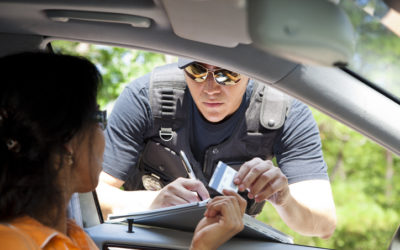Truck Blind Spots: Know the Danger Zones
Know The No Zones Regarding Truck Blind Spots
You’re traveling down the highway and come across a semi truck. You become nervous, as you realize that there are blind spots around a large vehicle. And thus, you feel like David going against Goliath on the road.
Your fears are not completely unfounded. Research shows that more than 4,000 individuals passed away in 2018 due to crashes involving semi trucks.
Many of these types of accidents happen simply because people who share the road with semi trucks don’t mind truck blind spots. Fortunately, we’ve compiled a guide with vital information on passing trucks and how to avoid blind spots.
Let’s get started!
What Are Truck Blind Spots?
Truck blind spots are the areas around a semi truck where the truck driver’s vision is either gone or restricted. The driver cannot see these areas when they look through a side or rear-view mirror.
Blind spots are the result of a semi truck’s sheer length and height. Because semi trucks are big, their drivers cannot see certain parts near their vehicles and the roadway.
In addition, the windshield and the size and design of the dashboard contribute to blind spots.
You won’t always be able to avoid entering a semi truck’s blind spot. However, it is critical that you avoid staying in these spots to avoid possible hazards.
If you don’t, the truck might switch to your lane and run into you. And in many cases, truck accidents that result from blind spots cause people in passenger cars to die more than they cause the truck drivers to die.
DRIVESAFE ONLINE DEFENSIVE DRIVING COURSES
Receive an Insurance Discount. Money-Back Guarantee!
Mobile-friendly viewing
Fully narrated video with closed captioning
Intelligent bookmarking to start/stop when you want
99% passing rate on user’s first attempt
Certificate emailed immediately after completion
Only $24.95
1-HOUR
6-HOUR
How to Avoid Semi Trucks’ Blind Spots
The smartest move you can make to avoid a semi truck accident is to avoid its blind spot, also known as its “no-zones.” There are several types of these zones.
First, you have no-zone in the front. This zone covers the lengths of 20 cars in the front area of the cab. Truck drivers sit much higher than other vehicle drivers do, and this causes them from being able to see the cars right in front of them.
Second, you have the no-zone on the right side. This area is behind the truck’s cab on the right. Because this is such a huge blind spot, you should allow one car length or more from the truck’s back area when you’re driving on a highway with multiple lanes.
Third, you have the no-zone on the left side, which is behind the truck’s cab on the left. This area is around 50% of the right no-zone’s size. As with the no-zone on the right side, allow one car length or more from the truck’s back area.
Finally, you have the no-zone on the back side of the truck. Truck cabs don’t have rear-view mirrors, so truck drivers can’t see if people are tailgating behind them. If they must stop immediately, tailgaters can easily rear-end them and suffer injuries or death as a result.
So, remember that when you are driving behind a semi truck, if you follow the truck too closely, you put the driver in control of the decisions you make as a driver. For instance, when he brakes, you must do the same. If you back off, you’ll regain control of your decision-making as a motorist.
All in all, a good rule of thumb to remember is that when you can’t see the face of a semi truck driver through your rear-view or side mirror, that driver can’t see you, either. So, move into a position where they can see you as quickly as possible.
Avoid Blind Spots Around a Large Vehicle While Passing Trucks
If you’re trying to pass on the right or left of a semi truck, you should try not to remain in the truck’s no-zone area on either side.
Also, if you must pass in front of the truck, make sure that you have enough time to pass the front-area no-zone prior to getting ahead of the semi truck.
Giving Trucks Turning Room
Semi truck drivers can’t help but to make turns that are very wide. So, when you notice that a semi truck’s blinker is on, avoid pulling up beside them.
The reality is, the truck will take just a handful of seconds to make the turn. Then, once they do, you can enjoy cruising at your pre-turn speed once again.
Avoiding Truck Blind Spots
You can minimize possible incidents with semi trucks by taking a few steps.
First, position your rear-view mirror so that the mirror covers your back vision. In addition, adjust the mirror on your left side so that you can partially see your car’s left side. Do the same right your mirror on your right side.
You should take these steps each time you get a new vehicle, or occasionally in your current vehicle.
How We Can Help You to Avoid Blind Spots
We offer top-of-the-line defensive driving courses for motorists who would like to drive more safely around semi trucks as well as save on their care insurance.
We provide a one-hour course and six-hour course that will teach you about the blind spots around a large vehicle. You’ll also learn how to avoid blind spots and how to go about passing trucks properly.
Our courses are mobile friendly for your convenience. And they feature fully narrated animation and video.
The best part? You can try out one of our courses for free.
Begin your free demo today to start learning more about truck blind spots, save money, and feel more confident when you’re sharing the road with a semi truck this year.
Other posts you might enjoy:
We Believe in Nashville
Our thoughts are with all those in Nashville and across the great state of Tennessee affected by the recent tornadoes. The safety of our DriveSafe Online family, customers and partners is our primary concern. Tennessee Governor Bill Lee called for residents to stay...
Child Passenger Safety Regulations: A State-By-State Guide
Your State-By-State Guide to Child Passenger Safety Regulations Child passenger safety regulations are in place because a leading cause of death for children, one in every four, is driving-related accidents. Each one of these deaths is a terrible tragedy, but you may...
Will A Speeding Ticket Affect My Insurance?
By Patrick Mileham DriveSafe Online Contributing Writer Speeding tickets are part of your driving record so they may increase the amount you pay for insurance. That’s the bad news. The good news is there are several factors that must occur to actually trigger a rate...
Your Road to Savings

Patrick M. is Editorial Director for the always expanding DriveSafe Online library of courses. With over two decades of experience developing award-winning training, he now focuses on innovating online driver safety training. Pulling from his background in journalism, he steers the wheel behind the creation of top-tier content that promotes a better journey—whether on the digital highway of learning or the real roads we travel every day.


